 Trust is foundational to every relationship.
Trust is foundational to every relationship.
In an article on building trust for Focus on the Family, Dr. John Townsend tells us that successful marriages are built on trust.
In his book, The Five Dysfunctions of a Team, Patrick Lencioni makes it clear that a lack of trust on a team is foundational to every other team problem.
Proverbs 3:5,6 makes it clear that our ongoing relationship with God has to be founded on trust.
Like marriages, healthy teams, and our relationship with God, small groups are built on a foundation of trust. If this foundation is solid, groups can weather significant storms. If not, they can very quickly and sometimes unexpectantly crumble. If you've led small groups ministries for very long, you've observed this.
A couple of decades ago we started building software to help small groups thrive. We interact closely with our customers and began to get a hint in 2008 that we could use data to flag trust fault lines in groups so that we could apply preventive measures.
The crazy thing about this discovery was not that the data was different from what churches had tracked for decades, it wasn't. It was how we interpreted it.
Typically, churches look at groups data at two different levels.
At the ministry level, they compare cumulative numbers of groups, those enrolled in groups, and those attending groups to the previous year, and/or to worship attendance. It may look something like this:
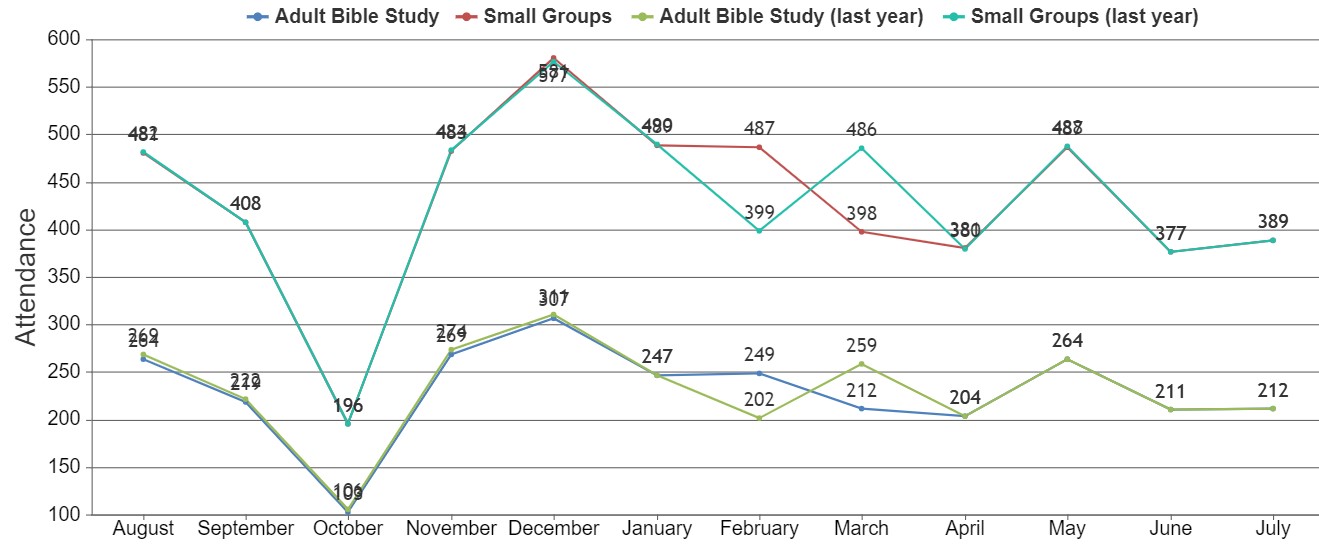
This report is helpful for overall church leadership evaluating the growth of their different ministries. But, it doesn't tell you about individuals in those ministries nor does it show you anything about individual small groups.
At the individual level. Churches typically have reports that show attendance for each person enrolled in the group.
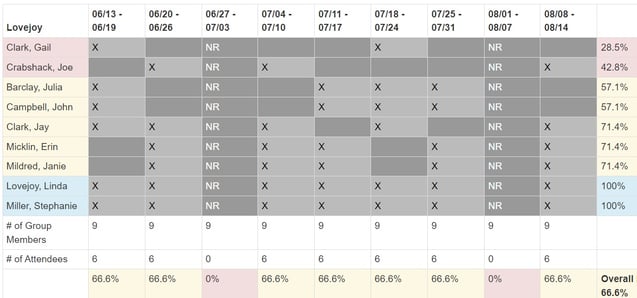
In some of his research as a volunteer groups director who also analyzed data at Microsoft for a living; our friend, Damon, ran across a tool called the Trust Equation. It is a fantastic business consulting tool that is rich with application for ministry and spiritual formation. But, for our situation, we recognized that ...
One of the factors that goes into building trust is consistency.
We also recognized that we could track consistency at the individual level by dividing the number of times an individual attended by the number of meetings. Really, this is how churches were already using the report, we just ordered the report by consistency instead of by last name to make it more obvious.
With new upgrades, we now automate reports that analyze this data and automatically populate attributes. These are pinned to the member profile page for easy access and viewability.
In this illustration, the first person is "Regular" (green) because she attends more than 50%, whereas the second person is an "Attender" (yellow) because he attends less than 50% of the time.
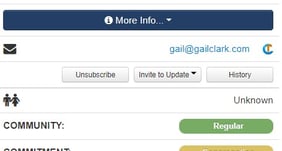
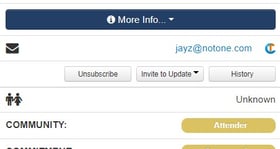
As helpful as the ministry and individual reports are to leaders at those levels. Staff and volunteers overseeing small groups were missing the information that was most important to them.
The missing level of data interpretation is the groups level.
The question that these mid-level leaders need to know is, "what is the relative health of each of our small groups?". Once again, trust is the best metric to answer this question and consistency is a data-based indicator of it.
So, in our reports, we just do the math and put together an incredibly useful small groups health report that looks like this:
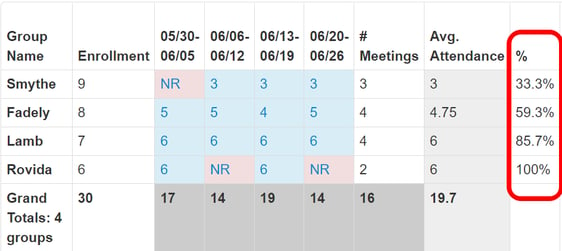
A quick analysis tells me that the Rovida and Lamb groups are doing great. 80% or more are there each time the group meets. The likelihood is high that trust in these groups is high.
The Fadely group is on the bubble (50-80%). It could have just been a busy month, or something in the group might be stirring.
The Smythe group, however, has more people that miss when the group meets than are there. This is discouraging to the leader and indicates the relationships in the group are not a priority. It could even indicate that the group is in conflict and needs someone to help them grow through it.
If the groups coach or staff person in charge of these groups doesn't do anything else next month, they need to check with this group. Do this by analyzing the individual data to ask the leader questions about specific people. Visit the group to tell them you care and to get a feel for the relational environment. Ask more questions.
Something is up and a good under-shepherd needs to know what it is. Good data interpretation can point them in the right direction.



